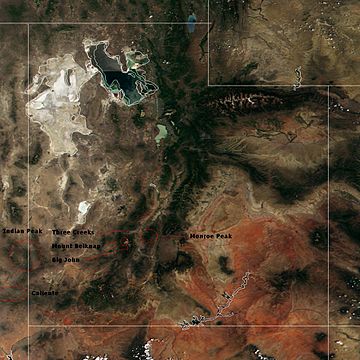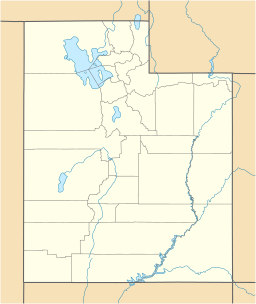Marysvale volcanic field facts for kids
Quick facts for kids Marysvale volcanic field |
|
|---|---|

Indian Peak caldera complex, and Caliente, Three Creeks, Mount Belknap, Big John and Monroe Peak calderas.
|
|
| Highest point | |
| Geography | |
| Location | Utah, United States |
| Geology | |
| Age of rock | Middle Cenozoic |
| Mountain type | Volcanic field |
The Marysvale volcanic field is located in southwestern Utah, United States.
One of the largest volcanic fields in the western United States, the Marysvale straddles the Colorado Plateau-Great Basin transition zone. Most igneous rocks belong to a middle Cenozoic (~32 to 22 million years old) calc-alkaline sequence, although about 5% are related to an upper Cenozoic (23 million years to Holocene) bimodal (basalt and rhyolite) sequence. The Marysvale contains a variety of volcanic features, including stratovolcanoes, calderas, lava domes, and cinder cones.
The field is an example of intraplate volcanism; its earlier deposits are thought to be related to Farallon plate subduction, while the later bimodal assemblage (especially the basalts) have been linked to Basin and Range extension.
Notable calderas
| Name | Size | Coordinates | Age |
|---|---|---|---|
| Monroe Peak Caldera | 20 x 16 km | 38°29′00″N 112°03′30″W / 38.483333°N 112.058333°W | 23 Ma |
| Big John Caldera | 10 x 6 km | 38°19′06″N 112°23′00″W / 38.318225°N 112.383333°W | 24 Ma |
| Mount Belknap Caldera | 17 x 13 km | 38°26′51″N 112°30′00″W / 38.4475°N 112.5°W | 19 Ma |
See also
 In Spanish: Campo volcánico de Marysvale para niños
In Spanish: Campo volcánico de Marysvale para niños


